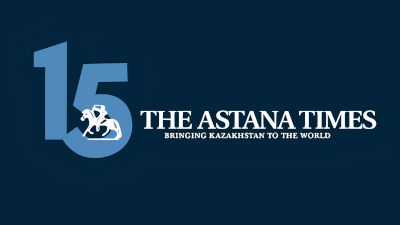ASTANA – With vast agricultural lands but inefficient irrigation systems, Kazakhstan might face major challenges when it comes to water scarcity. This article explores the use of transboundary rivers in Central Asia.

Photo credit : gettyimages.com
According to the World Meteorological Organization, up to five billion people may face water shortages by 2025, with Kazakhstan predicted to be among the most affected countries.
This forecast is supported by current trends: 65% of Kazakhstan’s water is used for agriculture, and more than half is wasted, seeping into the sands. Rivers like Syr Darya, Zhaiyk, and Ili are drying up, while the ecological situation in neighboring countries worsens and water consumption continues to rise.
Kazakhstan has seven rivers with a length of more than 1,000 kilometers, but only the Yesil River originates within the country. The Zhaiyk and Tobyl rivers flow in from Russia, the Irtysh and Ili from China, and the Syr Darya and Shu from the Kyrgyz Republic.
Transboundary rivers with Uzbekistan
Although it originates in the Kyrgyz Alatau, the Syr Darya River mainly flows through Uzbekistan. Therefore, effective use of this transboundary river requires close cooperation between all three countries.
Back in 1998, three countries – Kazakhstan, the Kyrgyz Republic and Uzbekistan – signed an agreement on the use of water and energy resources of the Syr Darya River basin. Later, Tajikistan joined the document.
Kazakhstan and Uzbekistan have agreed to install water-metering devices in each other’s territory to accurately track water consumption. The peculiarity here is that each side will install the equipment in the neighboring country rather than on its own territory, ensuring transparency and allowing for cross-checking of the data.
Uzbekistan views landscaping as key to saving the Syr Darya. Alongside Kazakhstan, it has been planting saxaul on the dried Aral Sea bed, with 28,000 hectares covered in Uzbekistan’s Moynak district last fall.
“It is clear that transboundary rivers are affected by climate change and the expansion of the arid zone. Under the Yashil Makon (Green Region) project, it is planned to plant one billion trees within five years. By planting 200 million saplings every year, we have brought the green area to 30%. This year, 588 hectares of ‘green park’ and 622 hectares of ‘green public park’ have been formed. In the cities of Bukhara, Nukus, Khiva, and Urgench green belts with a total area of 40 square kilometers have been created,” said Komiljon Zhuraev, representative of the Ecological Party of Uzbekistan to Kazinform news agency.
Climate change and inefficient agricultural use of water put additional pressure on natural freshwater resources and compounded the issue.
Experts believe the main issue is uncontrolled agricultural water use. Cotton farming on 1.1 million hectares upstream reduces flow, affecting farmers in the Turkistan Region. In Kyzylorda, rice cultivation also contributes to the decline of the Syr Darya.
Baitak Party Chairman Azamatkhan Amirtayev emphasizes the need to modernize drainage systems and improve the accounting and monitoring of transboundary water resources.
“There are many ways to save water today. For instance, rice farming in the Kyzylorda Region loses significant water due to uneven fields. Laser leveling systems must be widely adopted. The same applies to sugar beet farms. We need to ensure farmers can adapt when water levels in the Syr Darya drop,” Amirtayev said.
Transboundary rivers with the Kyrgyz Republic
In the Kyrgyz Republic, glaciers in the mountains are shrinking due to climate change and industrial emissions, threatening the source of the Syr Darya River.
Erkin Bulekbayev, chairman of the Green Party of the Kyrgyz Republic, said glaciers could shrink by 30-40% next year. In the last 50 years, their area has shrunk to 6,683 square kilometers.
“Glaciers currently hold 750 billion cubic meters of pure freshwater. Every year, 50 cubic kilometers of water flows down from the mountains. The Kyrgyz Republic uses only 20% of this, while the rest flows to neighboring countries. For example, Kazakhstan’s dependence on transboundary water resources is 42% and Uzbekistan’s is 77%,” told Bulekbayev Kazinform.
“Today, around 604,000 Kyrgyz people face water shortages. Last year, residents in areas near Bishkek, such as Selektion, Orok, Ak-Ordo, Archa-Beshik, Yntymak, and Ala-Too, struggled with a lack of drinking and irrigation water,” he added.
Transboundary rivers with China
Kazakhstan and China share 25 common rivers. In 2021, an agreement was reached on their use, however certain issues remain regarding the Irtysh and Ili rivers.
With the growing population in China’s Xinjiang Uygur Autonomous Region and the construction of new water reservoirs, the area of irrigated land in the region could reach 600,000 hectares by 2050. This would reduce Kazakhstan’s share of the Ili River by 40%.
A draft Intergovernmental Agreement on transboundary river water sharing is under development, but the timeline for a final decision is unclear.
Kazakhstan’s key interest is to maintain the water level in Lake Balkhash, which receives about 70% of its water from the Ili River. This year, the water flow at the Dobyn measuring station on the China-Kazakhstan border reached 384 cubic meters per second, which is 17% higher than last year.
Transboundary rivers with Russia
Kazakhstan and Russia signed an Agreement on Joint Use and Protection of Transboundary Waters in 2010, establishing a joint commission and six working groups. However, significant progress has been lacking, and a new phase of river study and monitoring in neighboring countries is now required. Rivers such as the Zhaiyk, Irtysh, Yesil, Tobyl, Ilek, Kigash, Karaozen, and Saryozen are in poor condition.
“Water inflow along the Zhaiyk River is controlled by the Yanvartsevo hydrological post. Since January of last year, the volume of water has totaled 19.3 cubic kilometers, exceeding the average annual norm. The river flow is influenced by the amount of water released from the Iriklinsky reservoir in Russia. These efforts are the result of meetings on transboundary rivers,” stated the Kazakh Ministry of Water Resources and Irrigation in an official response to Kazinform.
“To improve the water balance in the Zhaiyk River basin during the summer and fall, additional water releases from the Iriklinsky reservoir are being considered. The Unified Roadmap, developed based on studies in the Zhaiyk basin, has been implemented. As a result, we can now flood the floodplain and direct water to fish spawning areas,” the report continued.
Kazakhstan’s measures
Since the beginning of the year 2024, 28 meetings have been held with representatives from China, Russia, and Central Asian countries to address border river issues. As a result, over four billion cubic meters of water have flowed from Uzbekistan, 488.6 million cubic meters from Tajikistan, 180 million cubic meters from the Kyrgyz Republic via the Shu River, and 380 million cubic meters via the Talas River. Additionally, the Aral Sea received two billion cubic meters of water.
According to the new Water Code, 42 reservoirs capable of collecting 2.6 cubic kilometers of water should be built in Kazakhstan by 2030. Water losses during transportation have been reduced by 25% by reconstructing 14,000 kilometers of irrigation canals.
“The country has begun implementing 411 projects to develop water management facilities. This includes the rehabilitation of 575,900 hectares of irrigated land and the construction and reconstruction of 2,500 kilometers of canals. As a result, water supply quality will improve for 437 rural settlements, benefiting 1.048 million people. Additionally, digitalization of 3,500 kilometers of irrigation networks is underway in Almaty, Zhambyl, Kyzylorda, and Turkestan provinces. The reconstruction of 36.6 kilometers of the Nura group water pipeline has also been completed,” said Kazakh Minister of Water Resources and Irrigation Nurzhan Nurzhigitov.
The Ministry plans to save up to 2.2 billion cubic meters of water annually by the end of 2030.
The article was originally published on Kazinform.


